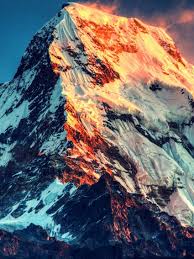A Brief History of Climbing Everest: From Dream to Reality
Mount Everest, the world’s highest peak at 8,849 meters, has long been a dream for climbers. However, reaching the top is not an easy task. In the early 20th century, several British Expeditions tried to conquer this mountain, but failed due to the extreme terrain and limited technology.
The short history of climbing Everest begins in 1953, when Sir Edmund Hillary from New Zealand and Tenzing Norgay, a Nepalese Sherpa, managed to reach the top. This expedition, led by John Hunt, used a southern approach in Nepal. Their success paved the way for many other expeditions, although the challenges of weather and altitude remained major obstacles.
After the success of Hillary and Tenzing, many climbers from all over the world tried their luck. In the 1970s, developments in technology and climbing equipment further increased the chances of success. However, climbing Everest remains dangerous, with many lives lost along the way.
In addition, the role of Sherpas is very important in the history of climbing Everest. They are known for their physical strength and ability to survive at extreme altitudes. Without their help, many expeditions might not have been successful.
Unexpected Danger in the Death Zone
Climbing Mount Everest is one of the most extreme challenges in the world, especially because of the presence of the Death Zone, an area above an altitude of 8,000 meters. In this zone, oxygen levels decrease drastically, causing the human body to have difficulty functioning normally. Climbers who enter the Death Zone face serious risks such as hypoxia, where the brain and body are deprived of oxygen, which can cause hallucinations, loss of consciousness, and even sudden death.
Unexpected dangers in the Death Zone also include extremely low temperatures, with extreme wind chills that can drop temperatures below -40°C. This condition increases the risk of frostbite and hypothermia. Additionally, the weather on Everest is highly unpredictable, with snowstorms that can appear suddenly, trapping climbers in deadly conditions.
Hiking trails in the Death Zone are also full of hidden ice crevasses and avalanches. Climbers often have to traverse seracs (large chunks of ice) that could collapse at any time. Many climbers are trapped or lose their lives due to accidents in this dangerous area.
Physical and mental conditions also pose serious challenges. Extreme fatigue, dehydration and loss of appetite worsen the climber’s condition. Even with thorough preparation, the body can suffer permanent damage, and many end up having to leave behind fellow climbers who are unable to continue the journey. The unpredictable dangers of the Death Zone continue to be one of the reasons why Everest is called the most dangerous mountain in the world.
The Important Role of Sherpas: Guides and Rescuers on Everest
In climbing Mount Everest, Sherpas play a very vital role as guides and rescuers for climbers. Sherpas are an ethnic group living in the Himalayan mountain area, especially in Nepal and Tibet. With extraordinary physical abilities, they are able to adapt to the extreme high-altitude conditions on Everest, making them excellent guides.
Sherpas’ physical advantages in dealing with low oxygen conditions are very helpful to climbers, especially when they enter the Death Zone. Apart from carrying heavy loads, Sherpas are also tasked with installing ropes, preparing climbing routes, and ensuring the safety of the expedition. Their experience in reading dangerous terrain and changeable weather makes them the determinant of success for many climbers.
However, the Sherpa’s role is not limited to logistics and navigation. They often act as lifesavers in critical situations, especially when climbers are exhausted or injured. Many Sherpas risk their lives to rescue climbers trapped in bad weather or deteriorating medical conditions at high altitudes.
As Everest’s popularity as a climbing destination increases, the role of Sherpas becomes increasingly crucial. Although they often do not receive the same recognition as foreign climbers, their contribution to Everest cannot be doubted. The important role of Sherpas is not only as guides, but also as life savers for many people trying to conquer the highest peaks in the world.
Extreme Weather at the Top of the World: The Threat that Lurks Every Climber
Climbing Mount Everest isn’t just about heights, it’s also about facing extreme weather at the top of the world. Temperatures at the top of Everest can drop as low as -60°C, and the combination of strong winds can make it feel much colder. This situation creates serious risks such as frostbite and hypothermia, which can be fatal for climbers.
Aside from the cold temperatures, the weather on Everest is very unpredictable. Blizzards can appear suddenly, changing conditions from sunny to dangerous in a matter of minutes. Hikers caught in these storms not only risk losing orientation, but also being trapped in extreme temperatures and extremely low visibility. This increases the chance of accidents and difficulty in navigating treacherous hiking trails.
Strong winds are also a major threat on Everest. With wind speeds that can reach 160 km/hour, climbers are at risk of experiencing fatigue more quickly and having difficulty breathing. Strong winds can create an extreme cold effect, making every step feel heavier and more tiring.
Although modern technology such as satellites and advanced weather forecasting have helped in planning hikes, rapidly changing weather remains a challenge. Extreme weather at the top of the world continues to be a threat looming over every climber, and mental and physical preparedness is key to surviving this harsh environment.
